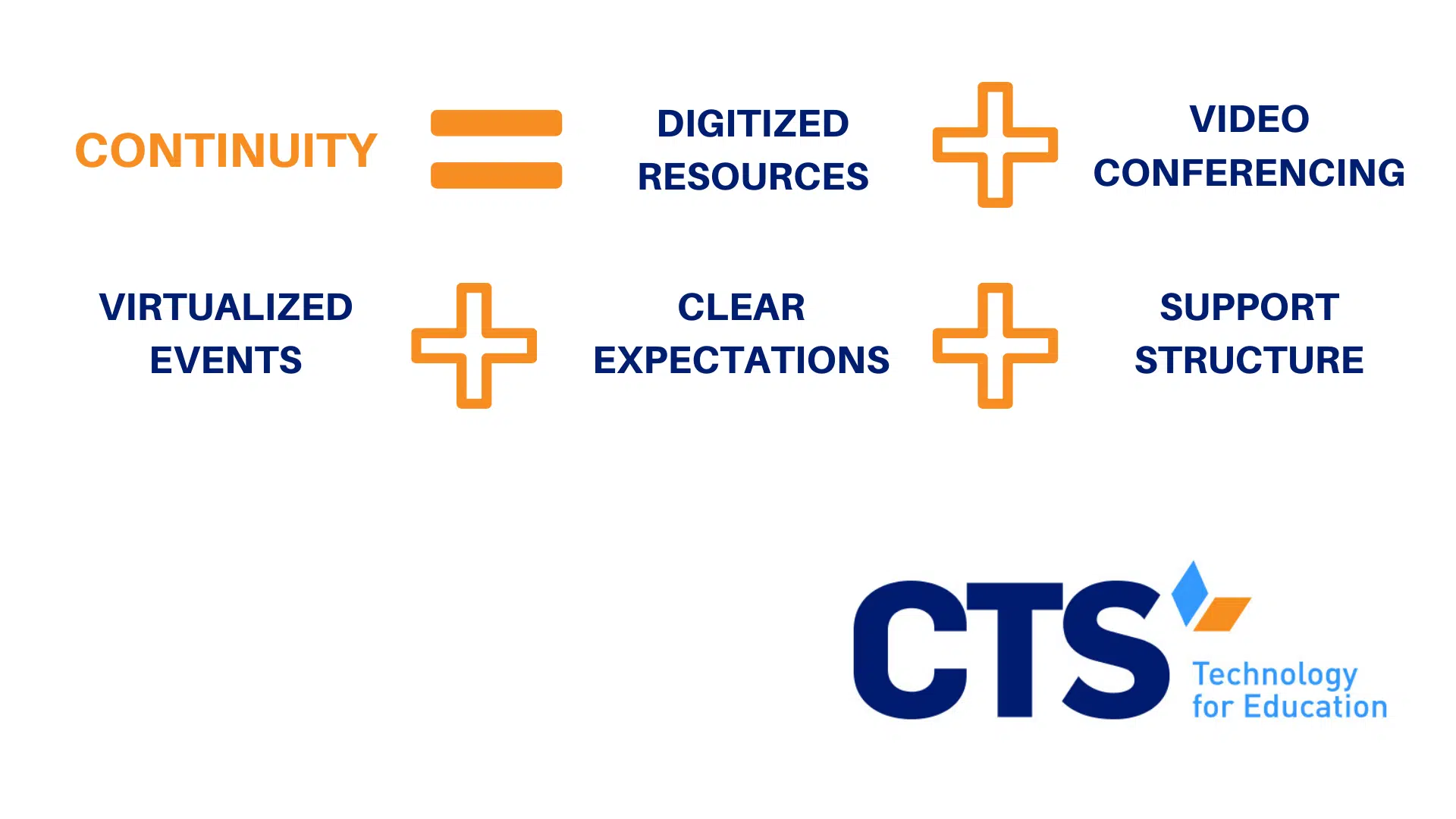Digitize your existing instructional resources to ensure continuity of learning.
For many teachers, the introduction of a distance learning program threatens to upend weeks of hard work. From creating lesson plans, developing student homework assignments, to planning in-class lab experiments, many of the in-person resources your teachers created will need to be digitized to ensure students maintain access throughout the school closure period.
At some schools, these efforts culminate in the widespread use of an LMS, such as Google Classroom or Canvas, in which all resources are compiled in a single, convenient location that facilitates easy access for students and families. Once the school closure period ends, school leaders may consider integrating digitization into their existing practices, ensuring all teacher-created content is consistently archived for later use.
Establish clear expectations for teachers, students, and families.
Once your school has compiled and shared its instructional resources, leaders should establish clear expectations for both teacher and student engagement throughout the school closure period. For example, leaders might require teachers to upload a certain number of lesson plans or other curricular materials, enter a specified number of student grades on a weekly basis, or hold virtual conferences with individual students and their families.
For students, teachers may measure engagement in a similar manner, requiring students to submit a certain number of assignments or some other evidence of learning each week. To track student engagement, leaders can work with their school’s technology provider to determine whether installing time-tracking plug-ins could help monitor student learning.

Leverage video conferencing for meetings, lessons, and student support.
School leaders and teachers can also leverage videoconferencing for accountability purposes. Rather than confining communication to email for the duration of the closure period, leaders can re-organize their calendars to facilitate weekly departmental, grade level, or other regular meetings via video, reducing inbox traffic in the process.
Teachers can similarly leverage videoconferencing for digital lesson delivery to students. After providing each student with an email account, schools can establish a point person to send recurring calendar invites to each class that includes a videoconferencing link. On the specified date and time, students can join the videoconference with their peers while the teacher delivers the day’s lesson from their home. Once complete, the teacher can then upload the recorded lesson to the school’s learning management system for later access. If students need extra help with a particular concept or assignment, teachers can also hold virtual office hours and meet with students one-on-one, as needed.
Create contingency plans for any in-person events, before it’s too late.
In addition to instruction, school leaders should also begin to reimagine school events that traditionally occur in person. For example, rather than holding a traditional graduation ceremony at the end of the school year, administrators should instead meet with their leadership teams to determine if a remote version is possible.
For smaller events, such as student-teacher conferences, leaders may increasingly leverage video conferencing to ensure these events continue during the school closure period. Working with your school’s technology provider, leaders should seek to hold such events virtually, whenever possible, to provide a sense of continuity for students and families.
Implement a clear troubleshooting structure to protect student learning.
During the distance learning period, leaders should anticipate technology-related issues from students, families, and staff. Such issues can become a roadblock to student learning, preventing teachers from successfully delivering instructional content in a remote setting. To stay ahead of these developments, leaders should designate a single point person or team of individuals for all technology-related issues that arise. This individual or team of individuals can then work with your school’s technology provider to triage incoming tickets.
In the absence of clear systems to resolve these issues, students may spend several hours of learning time in front of the TV or engaging in other activities unrelated to school content. Establishing these protocols from the outset can provide students, and especially families, with clear instructions on how to quickly troubleshoot issues with their school-issued technology and get on with the business of remote instruction.
At CTS, we help our clients ensure continuity of student learning, even in times of crisis.
Distance learning doesn’t have to reduce the quality of your instructional content. From support with hardware inventory and distribution to advice on how to organize your learning management system, CTS has the expertise to help your school navigate the common pitfalls of remote instruction and ensure educational continuity.
For those seeking to learn more about distance learning, we encourage you to consult our COVID-19 Resource Guide, which includes step-by-step instructions on how to solve the most common issues associated with remote instruction. Contact us today to learn more about the topics found in our guide and learn how you can continue to further your school’s unique mission, even in the midst of crisis.



